Virtual photography is computer-generated imagery (CGI) that’s virtually indistinguishable from traditional photography. With it, you can create high-resolution product photos at scale without having to hire a photographer.
If you don’t have an immediate and engaging way for your customers to experience what your makes your product special, you’re losing sales.
Even when people can see your entire catalog, if it’s hard to navigate or for customers to discover your product’s full potential, the buyer journey drags—and, eventually, fails.
Equally, if your distributors and sales teams struggle to understand your products as they evolve, it’ll slow your ability to go to market. And no amount of PDFs, guides, or other literature can address this problem.
Visual commerce makes it easier for your buyers to purchase complex products based on its four requisite characteristics, which we’ll explore in this article.
We’ll also look at the meaning of visual commerce and discuss its transformative effects on business performance. You’ll find out how other brands use visual commerce technology to enhance the sales process, and you’ll see some of the stunning results it achieves.
Visual commerce gives your customers the confidence to buy
Threekit connects your business systems to engage your audience at limitless scale.
Set Up a CallWhat is Visual Commerce?
Visual commerce gives consumers exciting new ways to experience your product portfolio
Visual commerce refers to a category of composable tools that help digital and IT teams organize their back-end while creating the perfect product experience—wherever the customer is.
When combined into a platform, those tools can be used to elevate your brand, your business operations, and the customer journey. Working in tandem, they present your audience with a new way to experience your complex product portfolio, so they can explore the possibilities, and build the confidence to buy.
So what are the four tools that make up a visual commerce platform?
Visual engine
Enables an extendable variety of visual experiences in 3D, virtual photography, or augmented reality (AR).
Product configurator
A built-in tool that manages product rules, logic, features, and choices in real time
Omnichannel distribution
Puts your product configurator everywhere you sell and create relevant experiences by channel.
Composable platform
Integrates and works seamlessly with all the software in your current and future tech stack.
Instead of asking your customers to “imagine if…” or giving them a limited list of options to filter and select from your product pages, visual commerce engages buyers in the full scope of your offering. It gives them a cohesive customer experience and makes them active participants in the design process.
Learn more about the capability of visual commerce below.
5 Transformative Benefits of Visual Commerce
Visual commerce is a strategic lever that drives sales in new channels, speeds up your go to market, and improves how your audience interacts with your product catalog. Here are some of its most powerful benefits.
1.
Stunning visual experiences
As digital channels have grown and evolved and products have become more complex and configurable, brands have long struggled with how to actually show every possible product variation. One of visual commerce’s three key components is its amazing product visuals, of which there are three main kinds:
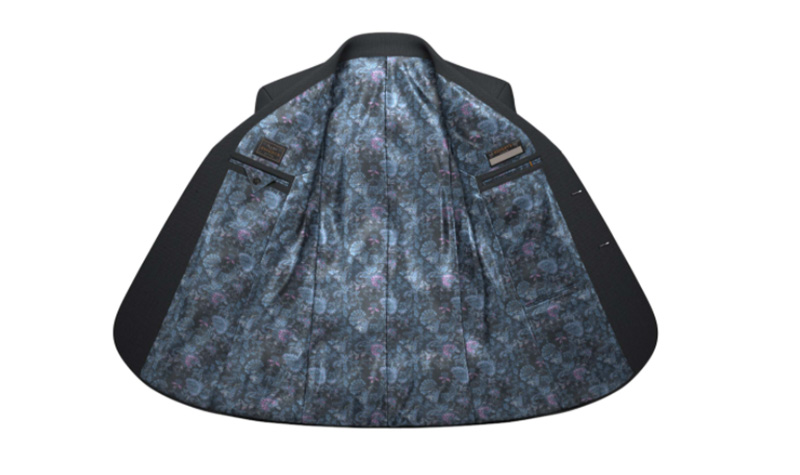
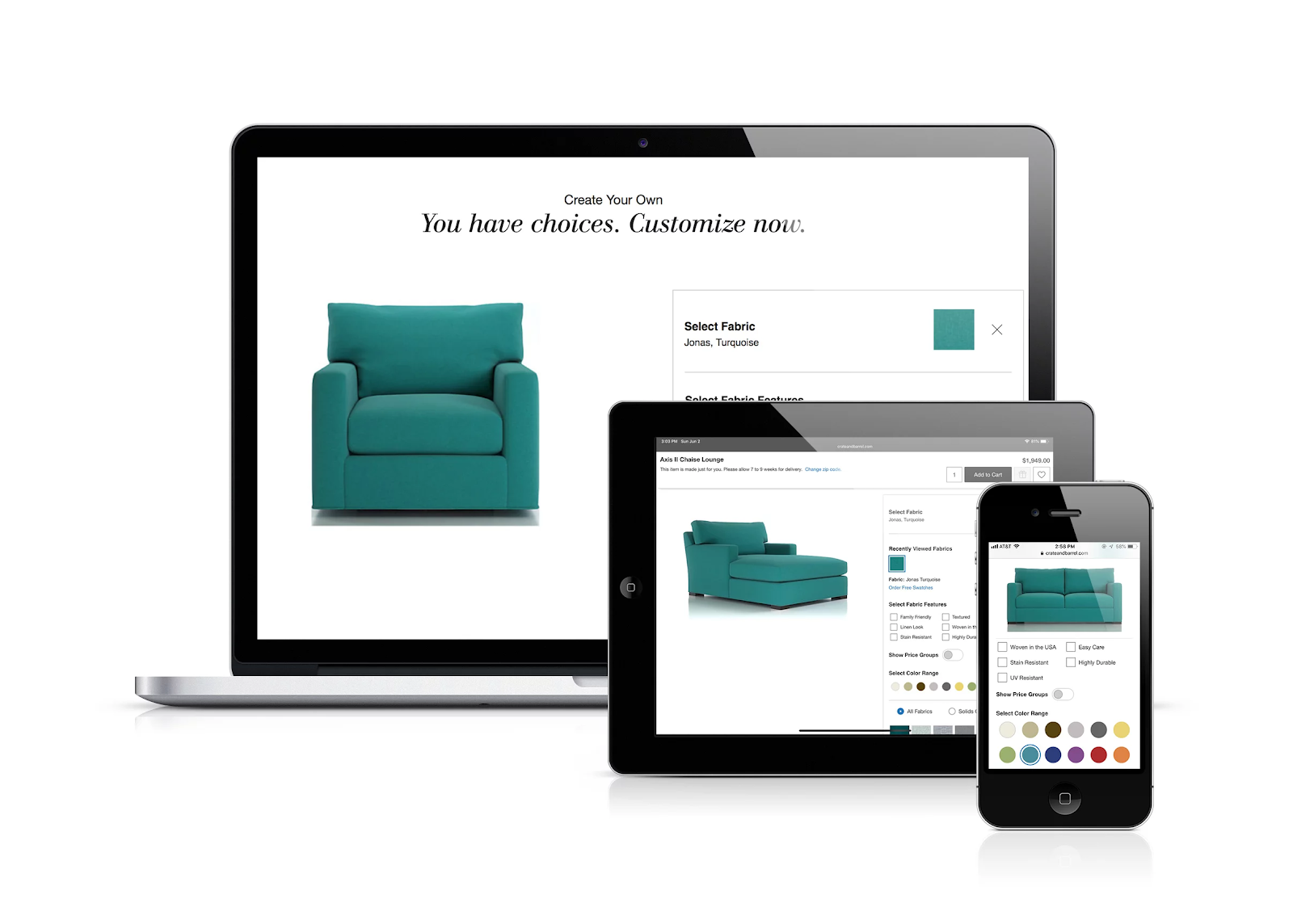
3D visual configuration allows customers to customize 360-degree views of the product with their choice of size and dimension, color, materials, hardware, and more.
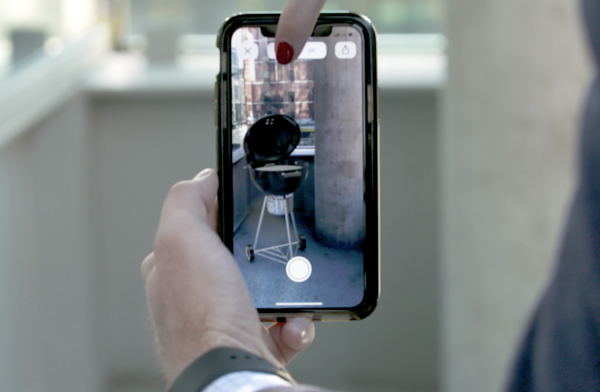
Augmented reality lets customers experience their designs in real-life spaces; they can switch through product ranges in that space, and then even change the space itself, going from a luxury loft to a conference room to a land development site.
However, these are just the foundational elements of a visual engine—other kinds of visual content and functionality are possible with visual commerce, including interactive interiors, modular configuration, and complex configuration.
Complex Configuration
Parametric Configuration
Space Planning
Field Service
Interactive product visuals revolutionize user engagement by offering various benefits across different contexts, like early product testing, augmenting reality experiences, or enabling unique and complex customizations.
“A customer's biggest concern before purchasing furniture is not wanting to make a mistake. We allow them the opportunity to review all products and options at their own pace to supplement the in-store experience and make a purchase decision with confidence.”
David Petersen, Vice President Marketing and Sales

2.
Product configurator built for digital commerce
Traditional product configurators are built to assist sales, so they’re focused on configure, price, and quote (CPQ) applications. This means that a salesperson can enter myriad product specifications for physical and non-physical products and churn out a quote efficiently.
CPQ was–and still is—a game-changing sales tool. But today, manufacturers don’t just need to sell, they need to enable buyers to explore and purchase their products on their own. In fact, according to Gartner, 95% of the modern B2B buying journey happens outside of sales calls. The modern customer journey is hugely reliant on independent research, investigation, and experimentation online.
With visual commerce, the product configurator can be deployed at any touchpoint throughout that customer journey—so a buyer can use the configurator on mobile, a website, or in-store. And more importantly, it applies the same complex rules and logic to physical products, then shows the buyer what those products will look like.
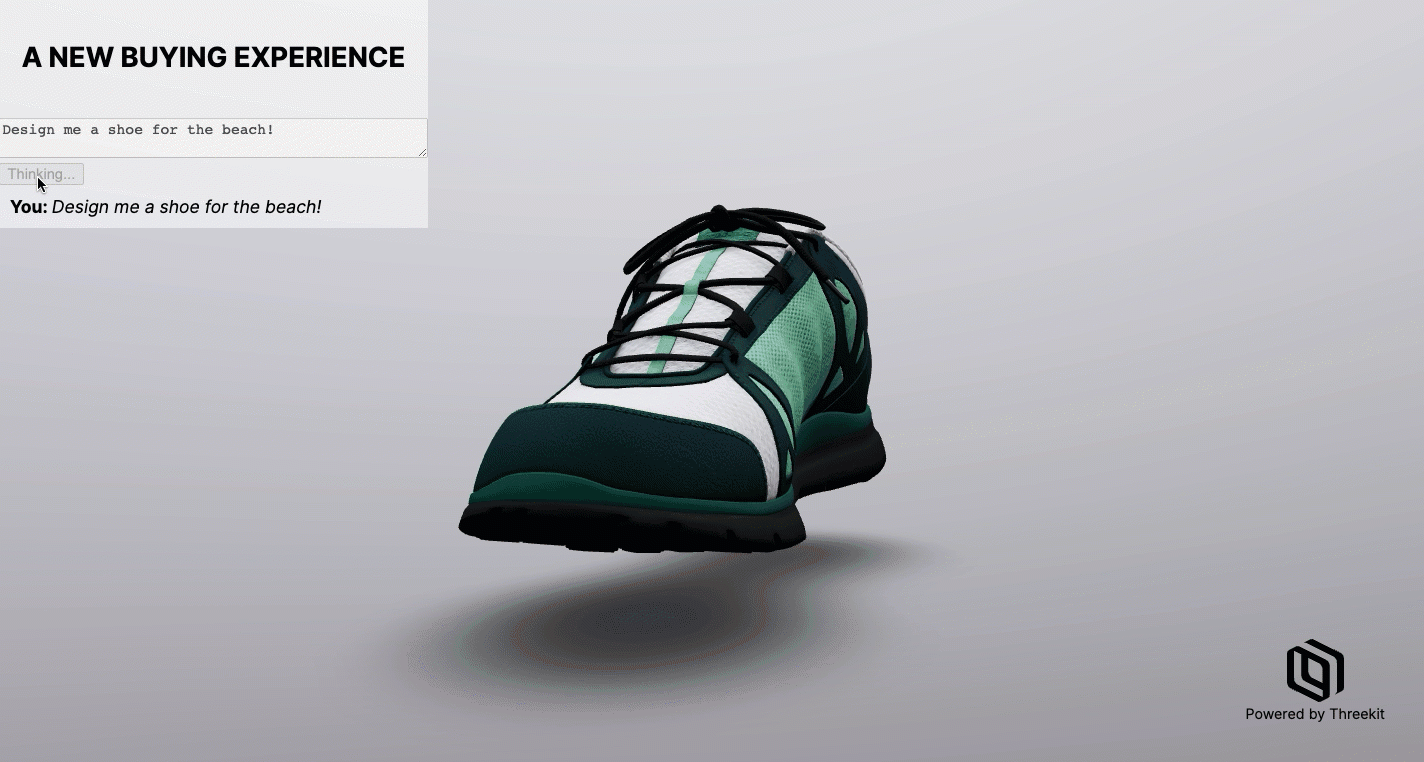
AI-powered product configuration has the ability to create a dynamic user experience
3.
Consistency in the buyer experience across all channels
Visual commerce centralizes your product rules and your visual content into one platform. From there, you can send your product content to all of your distribution channels, delivering a consistent product experience to your customer at every touchpoint.
For example, this might mean a mobile experience that’s faster and has a less complex configuration to account for buyers doing a more cursory product exploration on their phone. Or a sales team has advanced options, recommendations, and upsell suggestions so they can better guide customers to their ideal product.
Either way, it’s important that those product options remain consistent across your channels. Otherwise, you’ll get unhappy customers who’ve gone in-store to enquire about something they saw online, only to find that the salesperson has never heard of it.
With visual commerce, you have a centralized way to store everything so the customer can find it, no matter the touchpoint. You can even design buyer flows like this one:
- The customer saves a configuration online and submits their info as a qualified lead
- Then, they get an automatic follow-up email of their product rendered in high-quality 2D
- A salesperson calls them up to talk about the customer’s configuration and explore even better options together
- After purchase, the customer gets an “explodable” visual of their product that explains all its parts and features
- Later, they get tailored sales messaging including visuals of the product they brought with suggested upsells and required parts for re-order
“Before Threekit, we had to manually design workstations, but now, our customers and dealers can build and visualize their workstations instantly in 3D.”
Meagan Steffes, Project Manager at BOSTONtec

4.
Product experiences that reflect what your business can offer
As a composable solution that’s run on APIs, the visual commerce platform plugs into your product and business rules, so your audience’s customizations always work in line with your entire organization’s infrastructure.
For example, if the buyer wants to add a hydraulic crane attachment to a heavy goods vehicle, the composable product configurator will recognize that this necessitates an additional component—in this case, stabilizer legs. Equally, if your third-party outlet has certain shipping limits or requirements, this will also be factored into your 3D configurator.
So, every production, supply chain, shipping, or outlet condition is reflected in what your customer experiences via the product’s digital visualization.
A visual commerce platform gives buyers a unique experience that’s aligned with your business systems
5.
Customization at enormous scale
Visual commerce is a central platform for your visualization that leverages product configuration rules and logic to distribute the right experience into each endpoint across your business. With the layering of your product catalog’s conditions and requirements inside this single source of truth, your digital visualizations and their customizations become infinitely scalable.
This empowers the buyer to experience every possible permutation of your product portfolio. Instead of needing photography to get 10 product shots for one option with a few possible customizations, visual commerce is the power to show every product variation in real time.
Take clothes manufacturer Jos. A Bank, for example. With visual commerce technology, the company can create over a billion possible configurations of its products. Now customers can see the full potential of products on offer, bringing them one step closer to making a purchase.
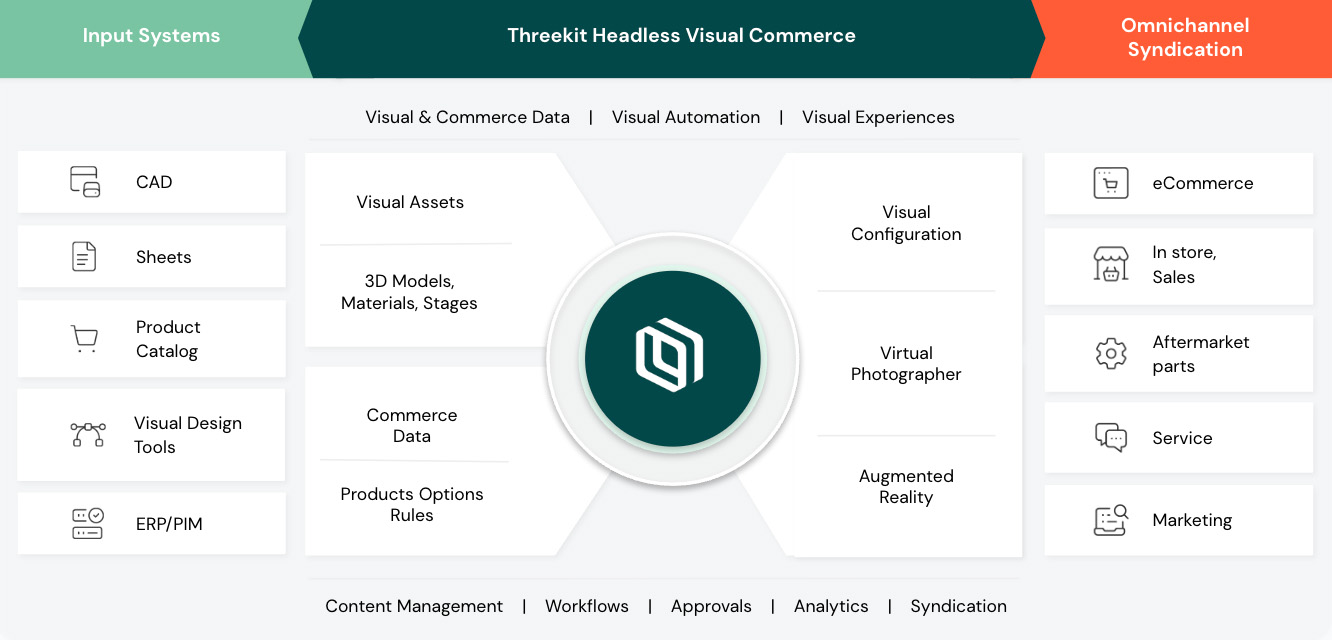
Visual commerce is an end-to-end business solution
Examples of Visual Commerce in Action
See how Threekit used visual commerce to help these brands address key issues in their business systems and buyer’s experience.
Lovesac’s customizable couches give customers almost limitless options across its range of fabrics, colors, dimensions, and constructions. But this furniture manufacturer didn’t have an effective way to showcase all these possibilities to the customer.
So Threekit helped Lovesac transform the buyer’s journey by connecting their product rules to a visual commerce product experience. This means customers can create an infinite number of configurations of the ‘Sactional’ couch with different arm styles, back styles, 150+ cover materials, and dozens of accessory add-ons. This amazing customer experience helped Lovesac drive 26.4% of growth in Q4 of 2022.
130% Revenue Growth in < 3 Years
Lovesac Revenue Since Threekit Implementation
As a manufacturer of customizable sheds, cabins, and garages, Ulrich Lifestyle Structures was dependent on its sales team to guide the buyer through the sales funnel.
Threekit plugged into Ulrich’s configurator and other software systems to create a new buyer experience. Ulrich’s customers can now navigate dozens of variables to create and scope the price of their building, while always staying within the parameters of Ulrich manufacturing capabilities and business rules.
This simplified the sales process and resulted in 400% more unit sales within a month of launch.
Visual commerce educates your potential customer, building their buying confidence
One of the most recognizable brands in golf, TaylorMade wanted to give customers personalization, increase brand engagement, and drive its direct-to-consumer business.
With Threekit, TaylorMade created an immersive digital experience for users to configure TaylorMade drivers in immersive 3D, with more than 100,000 possible configurations. This had an immediate impact on TaylorMade’s audience, doubling its forecasted website traffic and hitting its three-month sales target two months ahead of time.
When BOSTONtec’s product line and reseller channels scaled up, it wasn’t able to respond to the increased volume of requests as customers asked to see renderings of each possible customization.
Its first 3D visuals solution was limited and unable to handle the complexity of each product’s multiple configurations.
But, armed with the possibilities of visual commerce, Threekit digitized BOSTONtec’s product catalog and rules and created an intuitive interface for users to shape the product they wanted. This led to a 30% increase in quote requests within the first 12 months.
Resolving Complexity with Visual Commerce
Visual commerce technology engages your customers in infinitely scalable, accurate visualizations of your product catalog. And stunning interactive visuals are only part of the story.
With the composable platform of visual commerce, you can integrate your back and front-end systems, and give buyers a consistent product experience that accurately reflects what your business can offer.
That’s whether your product is affected by changes in your supply chain, the shipping requirements of a distributor, or an exciting new manufacturing capability.
As a result, your customer has access to a product configurator with limitless possibilities, so they can create the unique and lifelike customizations they want.
By centralizing your commerce channels and connecting them with your business endpoints alongside an amazing visual experience, you’ll amplify buyer confidence and deliver tangible business value.
Visual commerce gives your customers the confidence to buy
Threekit connects your business systems to engage your audience at limitless scale.
Set Up a Call
